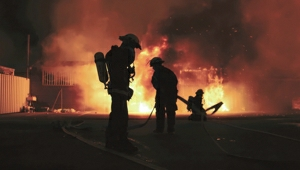 Donald MacFarlane, business manager, Gent by Honeywell, takes a closer look at the pros and cons of open and closed protocol for fire detection equipment
Donald MacFarlane, business manager, Gent by Honeywell, takes a closer look at the pros and cons of open and closed protocol for fire detection equipment
System protocols are something that has created much debate within the fire industry, and the definition of open and closed protocol is as contentious as the opinions about the advantages and disadvantages of different fire alarm systems. And, as the debate rages in the marketplace, the confusion is leading to many companies making the wrong choices for their business.
The term ‘protocol’ simply refers to the language that electronic equipment uses to communicate with each other.
Closed
A closed protocol effectively means that one company has sole ownership of the software tool and is responsible for the entire system. An advantage here is that the customer is essentially buying the expertise of the company, with the security of knowing the engineers will be fully trained and experienced in each specialist part of equipment.
In addition, a closed protocol is perceived to be more convenient as the company is a one stop shop and the customer only has to deal with that single company. However, the irony is that this is also viewed as a drawback of a closed protocol because using just one company closes the door on the rest of the competition and the choice is taken away from the customer. The user is tied to the manufacturer for spare parts, modification, upgrades and access to the protocol for servicing. The inability to shop around can put a premium on ongoing maintenance and prevent the customer from getting the best deal.
 Open
Open
Open protocol systems offer an opportunity for customers to access a wider market. With this type of system the detectors, interfaces and control equipment are interchangeable across a range of manufacturers, and customers have freedom of choice in terms of both product and installer. Users can assess the precise requirements of their fire system design and different suppliers can then be selected according to their specific areas of expertise. It allows easy access to equipment and any company can install, commission and service it.
 However, as with closed systems, the strengths of an open protocol is also its weakness. The open access can almost give the user too much control as anyone can work on the system, so there is no guarantee that an engineer has received the correct training on a product or has the relevant expertise.
However, as with closed systems, the strengths of an open protocol is also its weakness. The open access can almost give the user too much control as anyone can work on the system, so there is no guarantee that an engineer has received the correct training on a product or has the relevant expertise.
As well as having to decide which solution to choose, there is also the concern that the components must work seamlessly with each other to ensure that their ability to rapidly detect and notify a fire is not jeopardised. If an open protocol component is upgraded, there is a possibility that it may no longer be compatible with every other part of the system and fixing these can be both costly and time consuming.
The solution
Some manufacturers combine the advantages of both open and closed protocol systems by having specialist independent outlets throughout the country who provide end users with both competitive choice and the expertise required to work with these systems. The engineers in these specialist outlets (usually BAFE or LPS1014 approved companies) have to be fully trained on the product before the software is issued. So, the customer has the best of both worlds – a guaranteed competent service provider on-site, as well as the choice of alternative service providers if required.
Fire detection systems are long term investments – their public safety function comes ahead of everything else, so it is crucial that companies choose a solution that is completely reliable as well as cost effective. Every system needs to be fully backed-up by the manufacturer so only trained engineers are working on their system’s software. Choice is essential, but what is more important is the need for an element of control. Customers want systems that give them reliability, not vulnerability, and the continuous expertise of experienced manufacturers and their team of fully authorised integrators.

